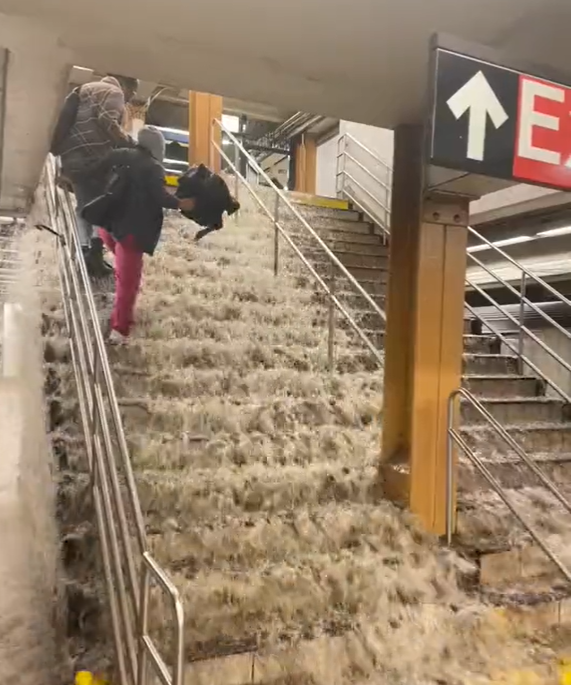At 8:30 a.m. on the 29th of last month. Water began gushing out like a fountain from a drain on one side of the four-lane road heading to LaGuardia Airport in New York City, USA. Due to heavy rain exceeding 50 mm per hour, the water rose quickly and the road was almost completely submerged. The cars, including the taxi the reporter was riding, had no choice but to move to the shoulder of the road and crawl in a single file. Mr. Rachiat, the driver, said, “This is my first experience like this,” and was embarrassed, saying, “I don’t know how to get out.”
While nearby cars were still busy, a disaster warning message from the authorities came to my cell phone 30 minutes later, saying, ‘Do not move as much as possible as there is a risk of life-threatening flooding.’ Most office workers and elementary, middle, and high school students had already started going to work and school. On this day, at least 150 schools suffered flooding in New York City alone.
Meanwhile, subway stations and roads throughout New York City, including Manhattan, Brooklyn, and Queens, were flooded. Terminal A at LaGuardia Airport was completely closed due to water. The door was barely opened around 11pm on the same day, but images of some passengers passing through the flooded area barefoot emerged on social media.
 On the 29th of last month (local time), rainwater suddenly flowed down the stairs of a subway station in New York City, USA, falling like a waterfall. social media capture
On the 29th of last month (local time), rainwater suddenly flowed down the stairs of a subway station in New York City, USA, falling like a waterfall. social media capture203 mm fell in the area of John F. Kennedy International Airport in one day. As of September, it was recorded as the rainiest September in 75 years since 1948. As a result, hundreds of flights were canceled or delayed. At the zoo in Manhattan’s Central Park, where 127 mm of rain fell, a sea lion was caught after escaping into a flooded area outside its enclosure.
In Brooklyn, where 177 mm of heavy rain was concentrated, semi-basement apartments and restaurants were hit hard by flooding. Tony Park, CEO of QB Hospitality, a New York restaurant company, said, “Even though the Brooklyn store was a new building, it was filled with water and we had no choice but to suspend operations.”
New York City Mayor Eric Adams is also being criticized for consistently responding backwards, such as holding a press conference only at 12 noon that day and declaring a state of emergency. One parent whose child commutes from Brooklyn to Manhattan High School by subway told a reporter, “I don’t understand why they opened the school when they said it was a record flood. “If it takes time to improve the drainage system, at least the warning system should work properly,” he complained.
According to the New York Times, New York City’s current drainage system can handle 1.75 inches (40.8 mm) of rain per hour. However, on this day, more than 2 inches per hour continued to fall, resulting in heavy rain of close to 200 mm per day, increasing flooding damage in many places. New York Governor Cathy Hocal said on the 30th of the same month, “Unfortunately, heavy rains are becoming the ‘new normal.’”
New York =
Source: Donga
Mark Jones is a world traveler and journalist for News Rebeat. With a curious mind and a love of adventure, Mark brings a unique perspective to the latest global events and provides in-depth and thought-provoking coverage of the world at large.